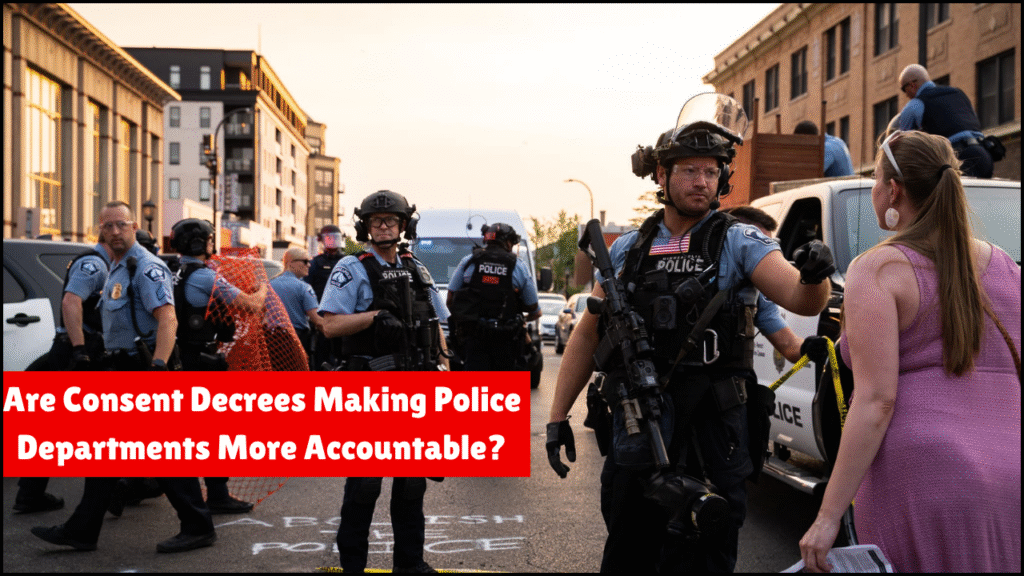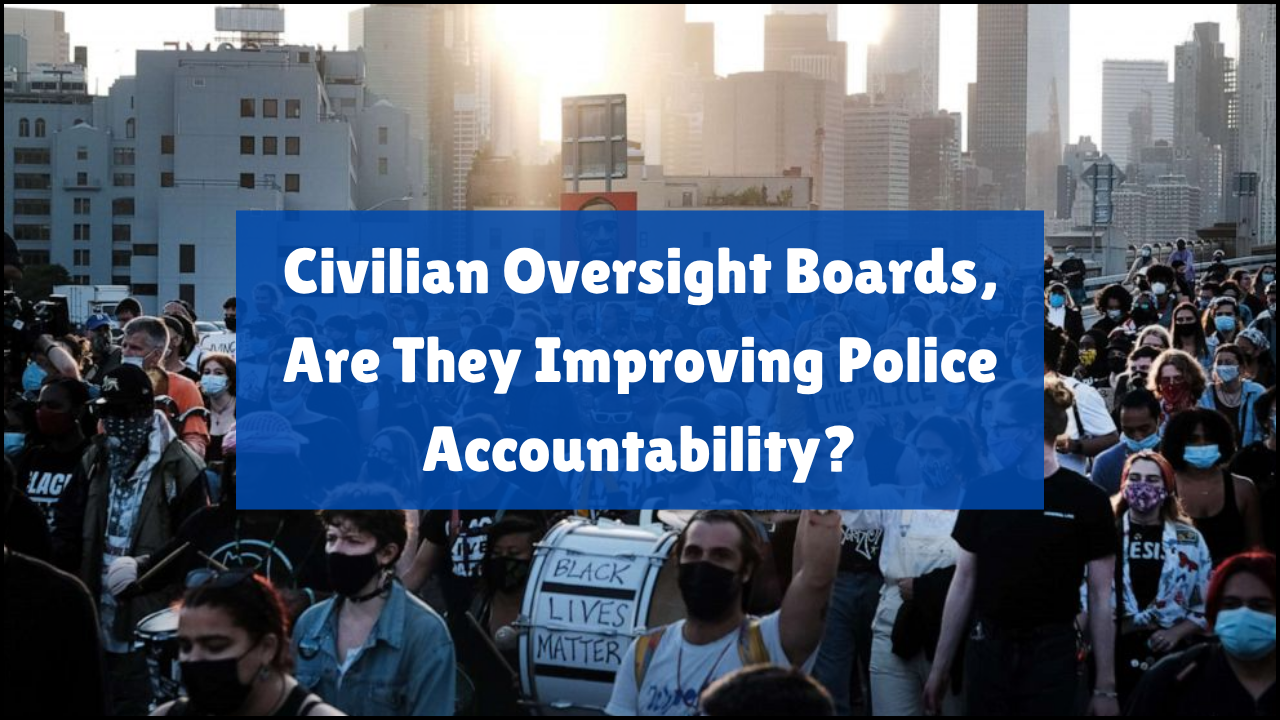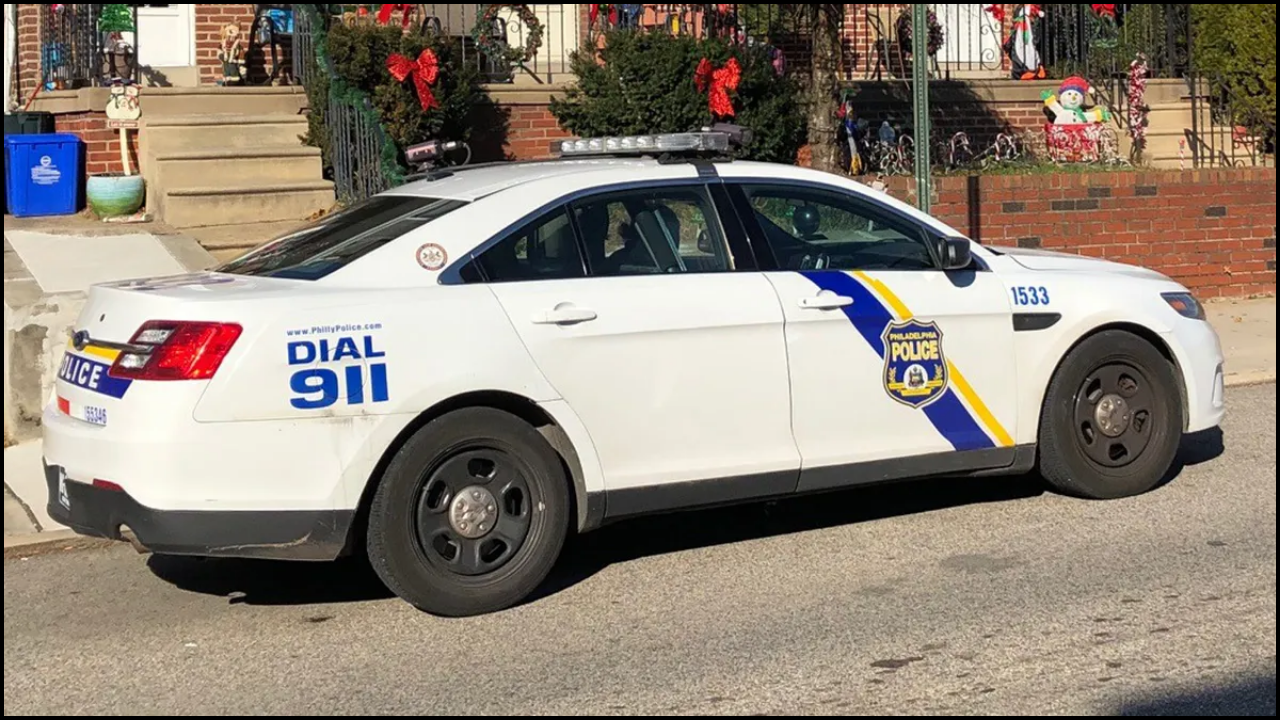
Accountability in policing has become a major concern in recent years, especially after high-profile incidents of misconduct. Consent decrees have emerged as a federal tool to reform police departments that show patterns of unconstitutional behavior. These legal agreements, usually enforced by the U.S. Department of Justice, aim to improve internal practices and enhance public trust. A growing debate surrounds whether these decrees are truly making police departments more accountable or merely adding bureaucratic oversight.
Table of Contents
Definition and Purpose of Consent Decrees
- Legal Agreement: Consent decrees are court-approved settlements between the federal government and local law enforcement agencies.
- Federal Oversight: They allow the Department of Justice to monitor department reforms over time without admitting fault by the agency.
- Accountability Mechanism: These agreements are used when a pattern or practice of misconduct violates constitutional rights.
- Compliance Requirements: Departments must meet specific benchmarks related to training, use of force, civilian complaints, and transparency.
- Monitor Involvement: An independent monitor tracks compliance and reports progress to the court and public.
Major Areas Addressed by Consent Decrees
| Focus Area | Description |
|---|---|
| Use of Force Policies | Revising when and how officers may use physical or lethal force. |
| Bias-Free Policing | Eliminating practices that disproportionately impact minority communities. |
| Internal Accountability | Ensuring timely and fair investigation of officer misconduct. |
| Community Engagement | Improving public trust through transparency and collaboration. |
| Officer Training | Providing enhanced training on de-escalation and civil rights protections. |
Examples of Consent Decrees in Action
- Los Angeles Police Department (2001–2013)
The LAPD underwent a 12-year federal consent decree following the Rampart scandal.- Resulted in new policies on the use of force and oversight mechanisms.
- Led to increased public trust and measurable improvements in community relations.
- Baltimore Police Department (2017–Ongoing)
Initiated after the death of Freddie Gray and a DOJ investigation.- Focused on the use of force, transportation practices, and constitutional policing.
- Still facing challenges in fully meeting court-ordered reforms.
- New Orleans Police Department (2012–Ongoing)
One of the most extensive federal decrees.- Addressed systemic misconduct and abuse of power.
- Significant improvements in transparency and complaint resolution have been noted.
Key Benefits of Consent Decrees
- Structured Reform: Reforms are implemented under judicial supervision with clear metrics and timelines.
- Public Transparency: Regular reports and community updates foster greater public understanding and involvement.
- Sustainable Change: Long-term improvements become institutionalized through policy changes and oversight.
- Increased Trust: Communities regain faith in police departments that demonstrate measurable reform efforts.
- Cultural Shifts: Internal norms begin to change as officers adapt to new expectations and practices.
Challenges and Criticisms
| Challenge | Explanation |
|---|---|
| Cost of Implementation | Reform efforts require significant financial resources for training and oversight. |
| Slow Progress | Reforms may take years to yield visible outcomes. |
| Resistance from Within | Officers and leadership may resist changes that alter traditional operations. |
| Lack of Timely Enforcement | Some cities show delays or lack full commitment to meeting decree requirements. |
| Over-reliance on Monitors | Critics argue that external monitors may not fully understand local conditions. |
Factors That Influence Decree Success
- Local Government Support: Political will from mayors and city councils is critical to sustained reform.
- Community Involvement: Input from advocacy groups, residents, and victims can shape more effective policies.
- Leadership Stability: Changes in police chiefs or city leadership can disrupt reform momentum.
- Clarity of Goals: Well-defined benchmarks help departments and the public measure real progress.
- Transparency of Reports: Public access to compliance reports increases accountability and trust.
Impact on Police Behavior and Public Perception
- Reduction in Use of Force Incidents: Departments under decrees often report fewer complaints and excessive force claims.
- Improved Civilian Complaint Systems: More robust internal affairs divisions help address misconduct swiftly and fairly.
- Enhanced Officer Training: Officers learn modern practices such as cultural sensitivity and mental health crisis response.
- Mixed Public Opinion: While some communities see change, others remain skeptical of law enforcement’s sincerity.
Comparison with Other Reform Approaches
| Reform Tool | Features | Consent Decree Comparison |
|---|---|---|
| Independent Review Boards | Civilian-led panels that assess complaints. | Less legally binding; lacks federal authority. |
| Community Policing | Partnership strategies between the police and the public. | More voluntary and less structured than decrees. |
| Internal Affairs Reform | Internal restructuring of discipline and oversight systems. | Useful but can lack transparency and impartiality. |
| State-Level Legislation | Laws that mandate policy reforms (e.g., body cams, chokehold bans). | Broader scope but less customized than city-specific consent decrees. |
Ongoing Debate: Effectiveness vs. Dependency
- Advocates’ Perspective: Consent decrees are necessary for enforcing constitutional behavior in non-compliant departments. They provide a legal mandate and a clear roadmap for reform.
- Critics’ View: Overreliance on federal oversight may hinder local control. Some argue these measures delay urgent reform by drawing out processes and focusing too much on paperwork.
- Balanced Approach: Combining federal decrees with grassroots activism and local reforms may yield the most enduring results.
Final Thoughts
Consent decrees have played a transformative role in addressing systemic issues in policing. These court-enforced agreements push departments toward constitutional standards and rebuild public trust through transparency and accountability. Despite challenges in implementation and cost, the potential for long-term institutional reform is significant. A collaborative effort involving law enforcement, government, and communities remains essential for lasting impact and a more just policing system.





